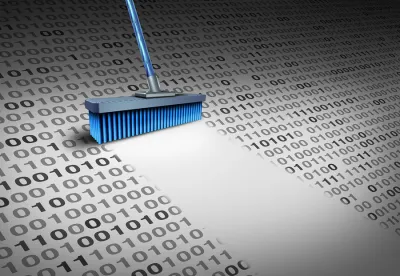Preservation of electronically stored evidence (ESI) may be critical in trade secret cases. When a dispute revolves around whether a defendant accessed and/or transmitted the plaintiff’s trade secret material maintained in an electronic file, the file’s metadata can have evidentiary importance. Similarly, the defendant may have an interest in the plaintiff’s own disclosures of the alleged trade secret because such disclosures may negate its status as a trade secret (e.g., by showing the plaintiff did not take reasonable steps to keep it secret). The defendant may also want to focus on preserving documents that show that it independently developed the alleged trade secret information.
The consequences for spoliation of electronically stored information may be severe and can range from monetary sanctions to the exclusion of evidence at trial and to even terminating sanctions. One of the most famous examples of a trade secret case where spoliation sanctions were issued is E.I. du Pont de Nemours & Co. v. Kolon Indus., Inc. There, the court sanctioned Kolon for intentionally deleting emails and files from computers by giving the jury an instruction that Kolon’s spoliation conduct may create an adverse inference against Kolon (e.g., that the spoliated evidence would have supported the misappropriation claims against Kolon). See E.I. du Pont de Nemours & Co., 803 F. Supp. 2d 469, 510 (E.D. Va. 2011). The jury subsequently awarded close to a billion dollars against Kolon. See Kolon Indus. Inc. v. E.I. DuPont de Nemours & Co., 748 F.3d 160, 166 (4th Cir. 2014). A more recent example is Roadrunner Transportation Servs., Inc. v. Tarwater. In that trade secret misappropriation case, the court entered a default judgment against the defendant as a sanction for spoliation, finding that the defendant had deleted emails and files on his laptop after receiving multiple preservation demands and after the court explicitly ordered defendant to preserve all data on his electronic devices. See Roadrunner Transportation Servs., Inc. v. Tarwater, 642 F. App’x 759, 759-760 (9th Cir. 2016). These cases underscore the need for litigants to be vigilant in preserving electronic data in trade secret litigation (pending and anticipated).
A particular data collection plan should be tailored to the circumstances of the litigation at hand. Ordinarily, the plan will be the result of input from the litigant, its litigation counsel and forensic consultant. This article provides a general overview of the 3-step forensic data collection process and offers some guidance on what a litigant may expect and how to plan accordingly.
Step 1: The Identification of ESI Sources & Litigation Holds
Most data collection plans will begin with an identification of potential sources of the litigant’s ESI relating to the claims and defenses in the litigation (threatened or actual). Generally, the categories of potentially relevant files (and, thus, potentially subject to the preservation obligation) will be formulated by litigation counsel with the litigant’s input (“Categories”). For example, counsel may develop the Categories based on the subject matter of the allegations in the complaint in the litigation. The litigant’s knowledge of the underlying facts may result in the identification of additional Categories. For example, the defendant litigant may inform counsel that the technology that is the subject of the misappropriation claim was licensed from a third party and, thus, documents related thereto should be preserved even though there is no allegation in the plaintiff’s complaint about a third party license.
Usually, the next step is to identify potential custodians of the ESI Categories and the media and locations where the subject ESI are stored. The litigant’s input is key since it ordinarily has a better understanding of who are the potential custodians and what ESI exists and the types of media in which it is stored in (e.g., hard drives, shared drives on a network, cloud storage, etc.). However, litigation counsel may provide a questionnaire to use with potential custodians to facilitate the process. If there are only a few potential custodians, personal interviews in lieu of a questionnaire may be a better option.
Counsel should consider handling with special care high level executives or others with very sensitive information in their possession. Addressing from the onset their concerns and personally explaining the purpose of the activities may avoid resistance from them.
Generally, as soon as the potential custodians are identified, a “litigation hold” instruction generally is sent. It ordinarily will instruct the recipients that they are to preserve (not delete or discard) until further notice the categories of documents and things that are identified in the litigation hold instruction.
Frequently, the litigant’s IT department is included as a recipient. Archive/deletion programs may need to be disabled to the extent they will affect preservation. The litigant and its counsel may work with the litigant’s IT department to that end.
The litigation hold memorandum may address the preservation of metadata in addition to the subject electronic documents. Metadata is data about data and, in this context, can reflect, among other information, when a file was accessed, or whether it was forwarded to a personal email account. The timing of access may be relevant in trade secret misappropriation cases (e.g., to discredit witnesses who testified that even though they inadvertently retained a copy, they never accessed [thus did not misuse] the trade secret file after they left the plaintiff’s employ).
Although an appropriate litigation hold memorandum is an important step, it alone may not immunize the litigant from a spoliation charge. The court may expect the litigant to actually follow the litigation hold instructions. Thus, litigants should consider issuing reminders and updates to the custodians that the litigation hold is still in effect.
Thus, depending on the circumstances, a litigant may have to cast a broad net over its files and their custodians. Although the process may strike the litigant as unduly burdensome and overbroad, the litigation adversary and the judge presiding over the litigation may not agree and, it is important for the litigant to consider that spoliation sanctions can change the course of the litigation (a disastrous instruction by the judge to the jury that the jury may assume the litigant spoliated evidence to conceal bad facts from the jury; a judgment entered against the litigant charged with spoliation).
Step 2: Collection
There can be multiple reasons to collect ESI, such as: (1) to make forensic images of files to ensure preservation; (2) to respond to another party’s request for documents and information; and (3) to respond to the litigant’s counsel’s request for document and information (e.g., in order to analyze strengths and weaknesses and related litigation strategies).
Often, collection efforts are conducted with the assistance of a qualified forensic consultant who is knowledgeable about applicable preservation/collection standards in litigation and may reduce the risk of inadvertent spoliation during the process. Employment of an independent expert may also be considered evidence of the litigant’s good faith if, in fact, spoliation does occur. This is important because, if the judge determines a litigant intentionally spoliated evidence, the judge may be more likely to impose a severe sanction.
The forensic consultant and litigation counsel may work together so that the collection is conducted in an appropriate manner. The litigant may also be involved to a certain extent (e.g., working with them to identify the potential custodians, their storage media, and their locations). The litigant’s IT personnel also may be looped in to address technical issues that may arise.
The plan may attempt to minimize disruption to business operations (e.g., image the hard drive on a lap top during non-business hours or at times which do not interfere with the custodian’s business activities).
Addressing “chain of custody” issues is another key consideration during the identification phase. One goal of data collection is to permit the litigant to introduce relevant evidence to assist its case. To be admitted into evidence, a document may have to meet certain evidentiary requirements, including evidence that the document is authenticate (is what it purports to be). The “chain of custody” is the record of the sequence of custody, control, transfer, and disposition of evidence. Thus, routinely, the forensic consultant cooperates with litigation counsel so that the chain of custody documentation is appropriate for the litigation at hand.
Step 3: Processing, Review and Production
After the ESI is collected, it may be processed by converting it into a format to facilitate review and analysis (e.g., to permit counsel to identify potentially privileged information that should be withheld from production to the litigation adversary; to permit counsel to identify important evidence that may be helpful or unhelpful to the litigant’s case).
Even if a litigant withholds certain documents from production on grounds of privilege or some other objection to the document requests, the litigant still preserves the documents because the judge may overrule the objections and order the documents produced. The judge, not the litigant, decides what documents the litigant must produce.
***
Forensic data preservation in trade secret cases should be conducted with care and planning from Day 1. Because mishandling the process may lead to crushing sanctions, litigants should consider making the preservation of ESI a priority and following the 3-step process outlined above.




 />i
/>i

